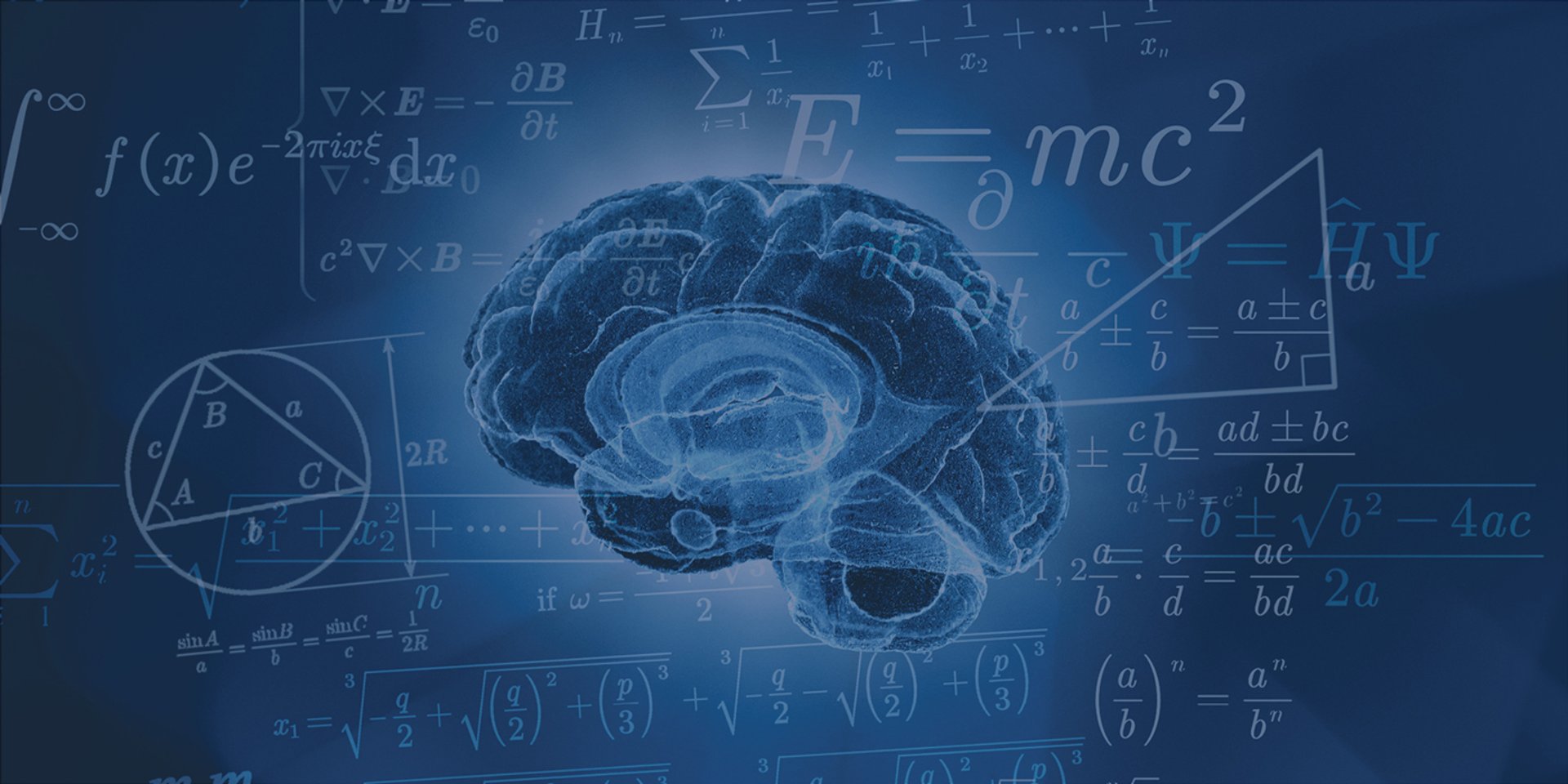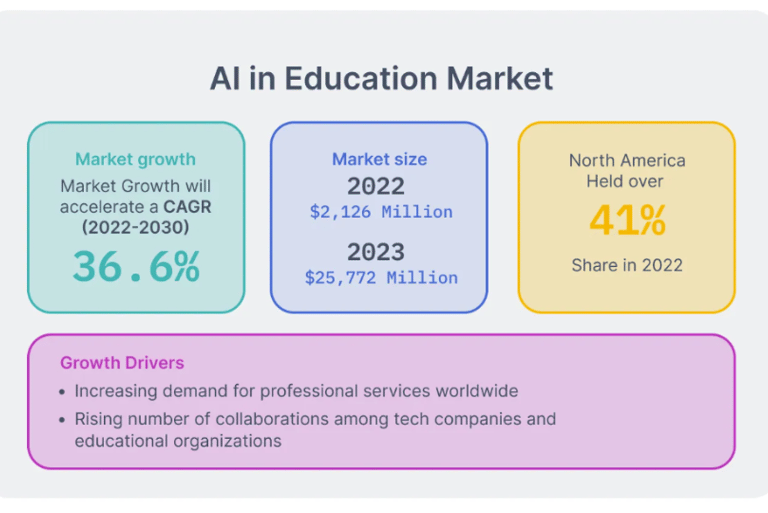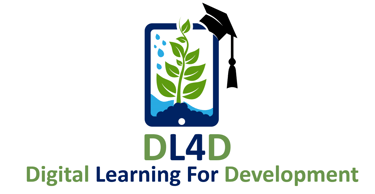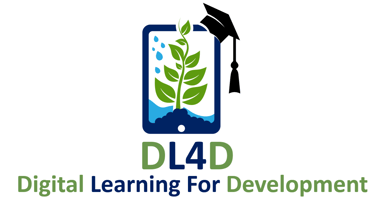
Use of Artificial Intelligence in Education
The use of AI in education is transforming the learning experience by offering personalized, adaptive solutions that cater to the unique needs of each learner. As AI continues to evolve, it holds the potential to revolutionize education by making it more accessible, flexible, and responsive to individual learning styles, ultimately enhancing outcomes for students and educators alike.

As the use of AI in education grows at an exponential rate, so does market leaders' interest. In 2020, the market for AI in education was estimated to be worth US$ 1.1 billion. According to UNESCO statistics, it is predicted to expand to over US$ 6 billion by 2024, representing a 445% increase in only four years. According to Market Research Engine, the market will be worth US$12 billion by 2027, representing a 100% increase in three years.
AI is also critical to UNESCO's attempts to achieve Goal 4 of the 17 Sustainable Development Goals by 2030: "ensure inclusive and equitable quality education and promote opportunities for lifelong learning for all." With this, the UN intends to achieve the promise of "AI for all" by utilizing technology to provide equal learning opportunities.
There are various advantages to combining technology and traditional teaching methods. They range from intelligent teaching systems and intelligent content generation for students to administrative work automation.
Examples of AI in Education
Voice Assistants
Voice assistants are an interesting and convenient approach to bring learning to the user's home while also assisting users in scheduling study calendars, listening to coaching instructions while on the go, and providing immediate answers to basic queries from students in class. Among the advantages of voice assistants in education are:
Time is saved efficiently for students and teachers.
Providing learning opportunities in the community
Personalized schooling in a matter of seconds
Even if a smartphone lacks smart speakers, these AI-powered voice assistants can be used in apps.
Some individuals demand individualized attention and learning methods that may make them feel alienated in a regular classroom setting. Students with hearing or visual impairments, physical challenges, or who do not speak the language fluently can benefit from artificial intelligence.
Audio transcribers, which are bundled with MS Teams, can assist students with hearing difficulties in understanding lectures. Speech-to-text technology can also aid in taking class notes and writing tests. For example, Nuance's speech recognition software boasts a transcription speed of 160 words per minute and is useful for pupils with low writing ability.
Grading
After collecting vital data on metrics for evaluating assignments from papers graded by teachers/professors, AI-powered grading software combines Machine Learning to construct calculating systems. The technologies are intended to comprehend and imitate the older human grading process used by teachers. Teachers' inputs combined with AI can grade essays, papers, and tests in seconds, even in many languages. They are simple to include into an existing virtual environment or cloud-based platform. They are useful when the number of papers is large, allowing teachers to focus on more value-based work rather than wasting hours grading.
Vision based grading
Computer vision-based technologies, such as GradeScanner, automatically grade multiple-choice questions using photographs of bubble sheets. Other applications of computer vision for grading include employing programs like MS Maths to assess mathematics-related problems using photographs of the equations. These grading methods can save teachers time while also reducing errors.
Language based model grading
AI can recognize written content from essays or long-form answers, map it to traditional grade levels, and generate a writing score. AI language models are used by several educational companies, including Pearsons and Educational Testing Service, to help score essays. Other applications of AI in education grading include plagiarism detection using platforms such as Turnitin.
Personalized Learning
AI tools can help with learning by creating personalized study regimens and tailoring learning to particular learners' needs. They detect knowledge gaps and develop education, testing, and feedback systems for students from preschool to college. AI-powered software, games, and applications can help students learn at their own pace, time, and level of repetition. This machine-assisted classroom environment can support teachers in customizing specific lesson plans based on the needs of individual students, and it can go a long way toward differentiated and adaptable learning, which can lay a firm basis for all types of learners.
A tailored learning system, for example, may detect that a learner is struggling with a specific mathematical idea. To help the student master the concept, the system would then present them with extra resources and support, such as focused practice problems or films. The system would continue to alter the education as the student progressed to match their evolving needs.
Companies such as Content Technologies and Carnegie Learning have created intelligent systems that leverage AI to give individualized learning and feedback to students ranging from kindergarten to college. Their sophisticated instruction design can detect knowledge gaps, divert to new topics, and develop learning content that is tailored to the needs of each individual.
Tutoring outside of the classroom
Artificial intelligence chatbots are beneficial for pupils who require extra tutoring after school. The idea is for students to be able to speak with the bots in the same way that they would with real teachers, offering a personalized, one-on-one learning experience.
School closures during the epidemic emphasized the importance of AI in education, particularly for educational possibilities outside of the classroom. Modern chatbots are already quite efficient in their processing and can respond to student questions in 2.7 seconds.
Conversational AI systems have already been developed by companies such as Capacity and AllHere to answer student questions about subjects and internal university affairs such as assignments and exams.
A study of Ghanaian students found that those who interacted with an educational chatbot scored 25% higher than those who did not.
Virtual Learning
Students can use VR technologies to connect directly to their mobile devices or computers and interact with information. Virtual learning environments can provide group educational experiences, student counseling, and an immersive learning experience. By shutting out distractions and enhancing attention spans, VR headsets can benefit students with ADD/ADHD. Learners can also use interactive virtual simulations to help them with soft skill coaching, life skills, and self-development.
Gamification
Using game components such as points, medals, and leaderboards, AI-powered gamification can make learning more interesting and pleasurable. Gamification can encourage students to learn while also assisting them in the development of crucial abilities such as problem solving and critical thinking.
Gamification can be applied in a wide range of educational settings, from K-12 classrooms to higher education and professional development programs. A gamified math program, for example, can reward points to students for correctly completing practice problems and allow pupils to proceed through levels as they demonstrate mastery of various subjects.


Contact us
Whether you have a request, a query, or want to work with us, use the form below to get in touch with our team.




